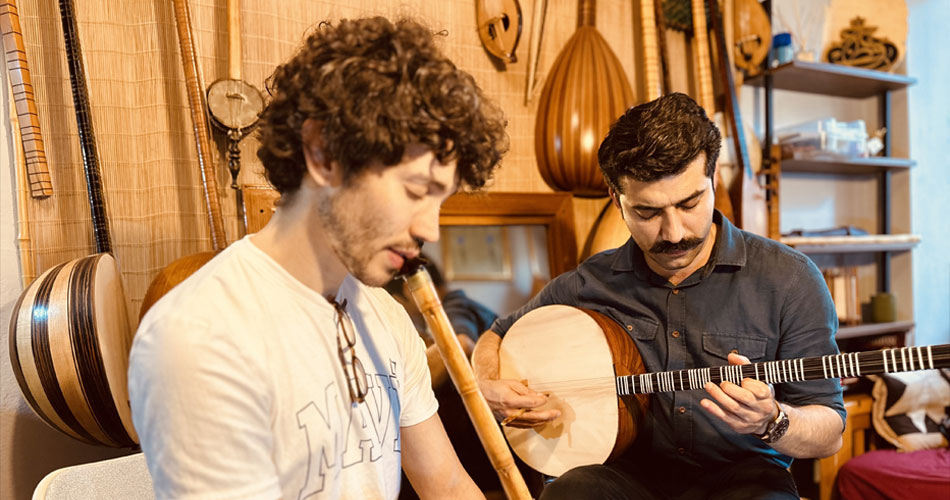From May to July 2024, and subsequently from April to June 2025, I conducted fieldwork in Istanbul, focusing on the current state of Ottoman-Turkish art music (makam). Given our project’s ‘beyond nation’ scope, I proposed that the concert scheduled for November 20, 2024, in Venice should feature compositions by ‘foreign’ composers—referred to as acemler, acemī, or acemīyūn, and generally regarded as ‘Persians’—found in 17th and 18th-century treatises by Bobowski, Cantemir, and Kevserī. Consequently, in 2024, my fieldwork in Istanbul began with meetings with Master Fikret Karakaya, director of the Ensemble Bezmârâ, in his studio to prepare the concert’s repertoire. Following these, I met the entire Ensemble Bezmârâ at the Iskender Baba tekkesı in Üsküdar, where I recorded some of their performances and subsequently interviewed all its members, one by one, asking them to tell us about their journey in the makam, their path of study and to introduce their instruments, often reconstructed from miniatures. These meetings were then complemented, between June and July, by a long series of interviews with young and brilliant makam musicians, interspersed with visits to Sufi centres.
Unexpectedly, in 2025, the Sufi aspect gained significant prominence. Between April and June, I had the opportunity to attend numerous Sufi gatherings featuring makam music. In retrospect, this connection is entirely natural: it is widely known that during the centuries most Ottoman art music composers received their training in Sufi centres. Once trained, they often composed music for the ritual (âyın) of various Sufi brotherhoods, many of which remain active in Istanbul today due to a complex socio-musical ‘revival’ phenomenon. The âyıns I participated in were mostly performed in Mevlevī centers (tekkes) such as Bahariye and Yenikapı by the musicians of the Tarih Türk Musiği Topluğu, rooted in the Halveti Cerrahi Centre in Karagümrük, but I participated as well to other rituals in other less visible Sufi centres. In any case, it is noteworthy that many of the musicians I met in 2024 were also performing in these ensembles. In the end, my visits in both 2024 and 2025 collectively reveal a very vibrant picture of art music in Istanbul. It is actively played and‘lived’ by young musicians, and the workshops of luthiers and instrument makers are bustling, indicating a strong interest in studying traditional instruments and traditional art music.
Tags: Giovanni De Zorzi, Istanbul fieldwork 2024-25, Ottoman-Turkish art music

